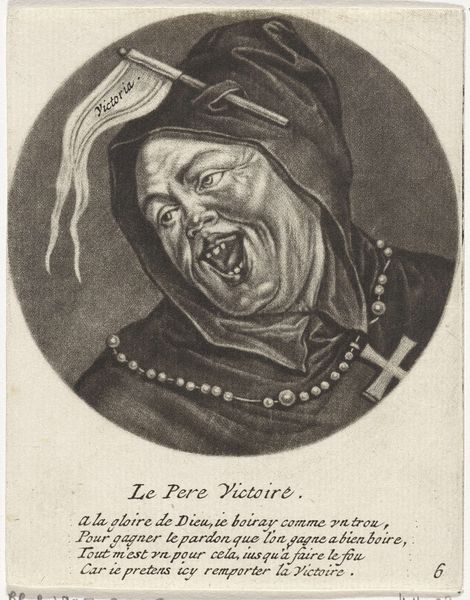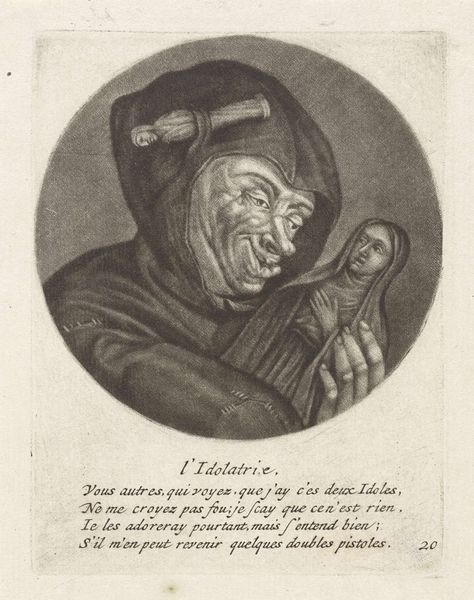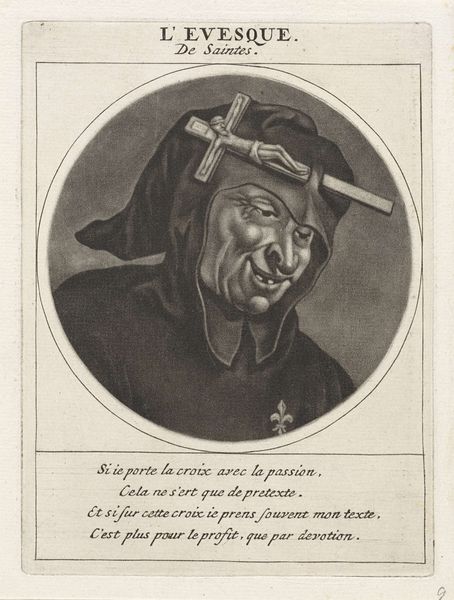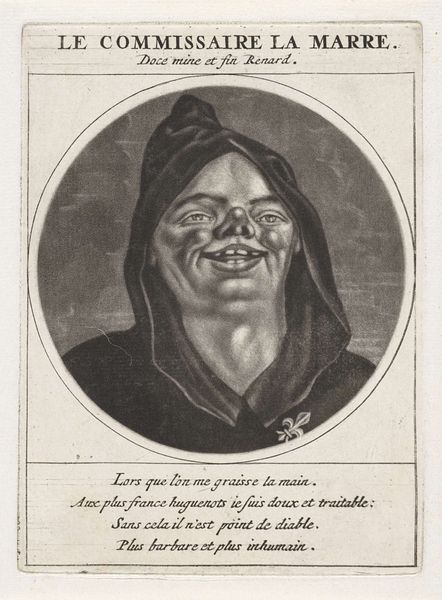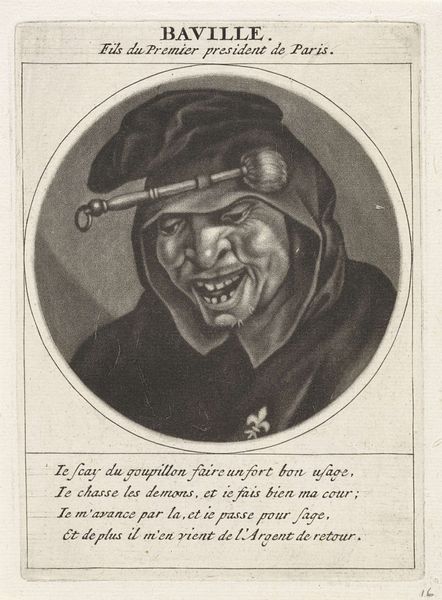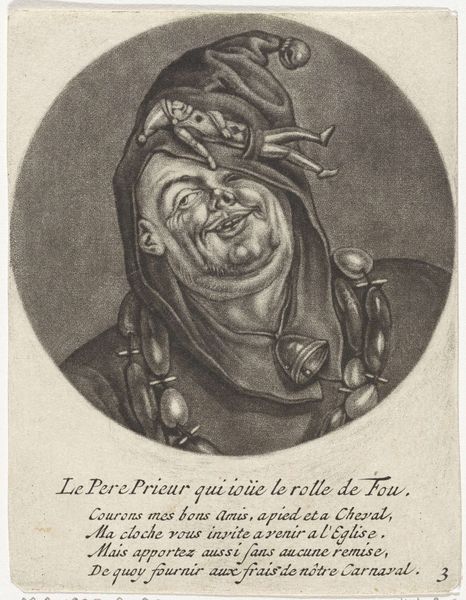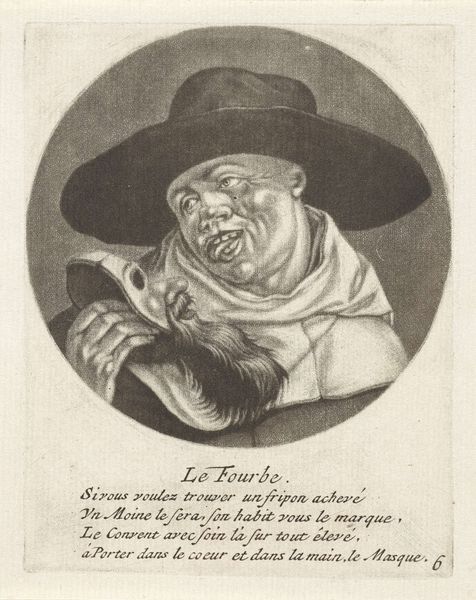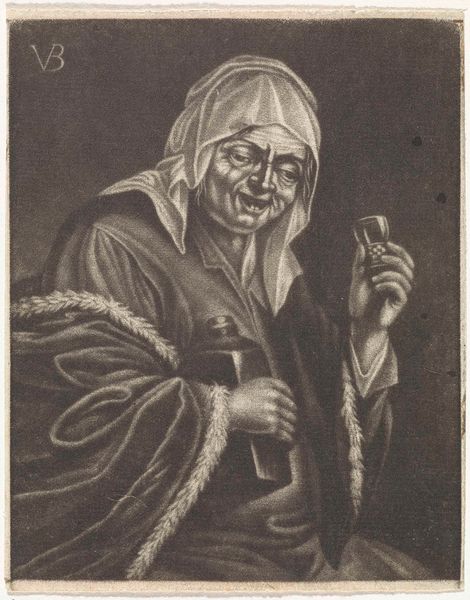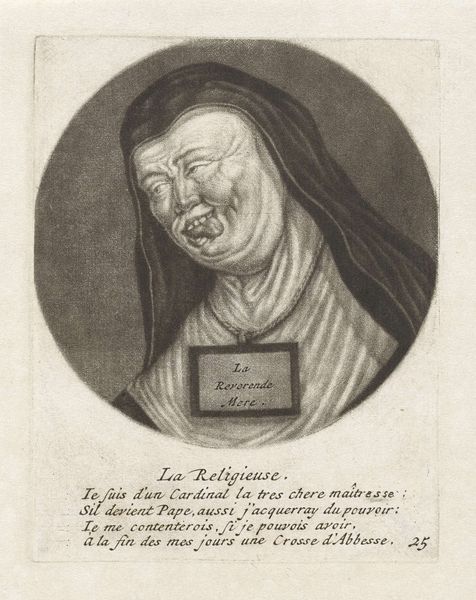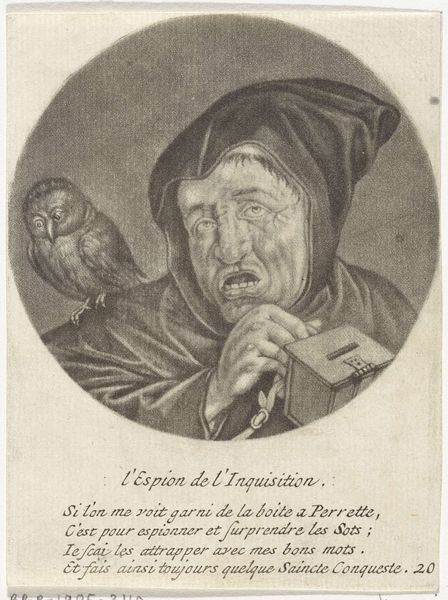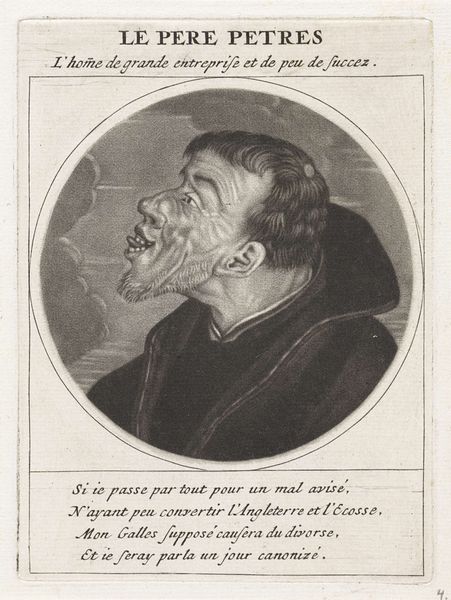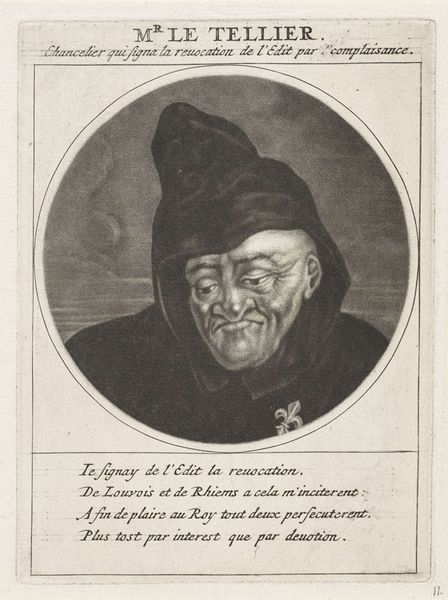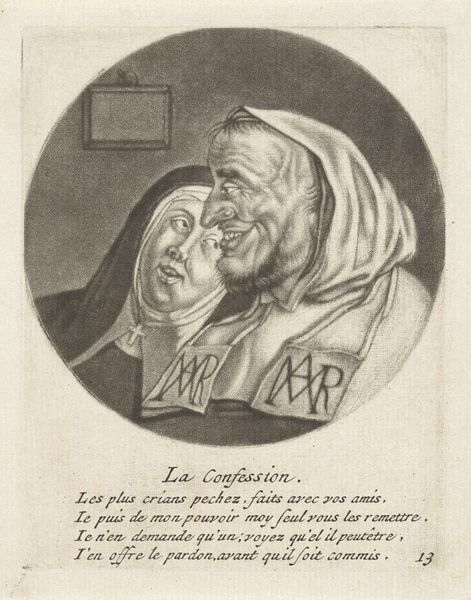
print, engraving
#
baroque
# print
#
old engraving style
#
engraving
Dimensions: height 146 mm, width 107 mm
Copyright: Rijks Museum: Open Domain
Editor: So, this is Jacob Gole's "Portrait of Bishop Wilhelm Egon von Fürstenberg-Heiligenberg," from 1691, it's an engraving and it's at the Rijksmuseum. I'm struck by how unflattering it is, especially the almost grotesque expression on his face. What do you see in this piece? Curator: Well, let's consider the context. While seemingly a straightforward portrait, the text tells a more nuanced story. This wasn’t just a depiction, it was a politically charged statement reflecting the turbulent relationship between France and other European powers at the time. The French text references serving France, possibly through betrayal or bribery, and ultimately being rewarded with an abbey. Editor: So, you’re saying the ugly depiction of his face relates to his perceived political actions? Curator: Exactly. Gole isn’t just showing us the Bishop; he's presenting a commentary on power, corruption, and the church's entanglement with statecraft. Think about the power dynamics at play. The print would have circulated, influencing public opinion about the Bishop and, more broadly, about political and religious figures who appeared to prioritize self-interest over the common good. What do you think is the significance of an unflattering portrait in this context, particularly when intended for wide circulation? Editor: I suppose, at face value, the caricature here becomes a potent tool for ridicule, eroding the subject's authority and credibility, which reflects Baroque-era criticism. Curator: Precisely. It questions the very foundations upon which these figures stood, revealing a glimpse of the increasing public role and awareness of social, cultural, and institutional issues. Editor: It’s incredible how much this one image encapsulates! I never thought about engravings as carriers of political opinion in that period. Curator: Indeed. By examining this artwork through a historical lens, we’ve uncovered a world of socio-political messaging that challenges conventional views of portraiture. It serves as a reminder of the power art wields in shaping public discourse.
Comments
No comments
Be the first to comment and join the conversation on the ultimate creative platform.
